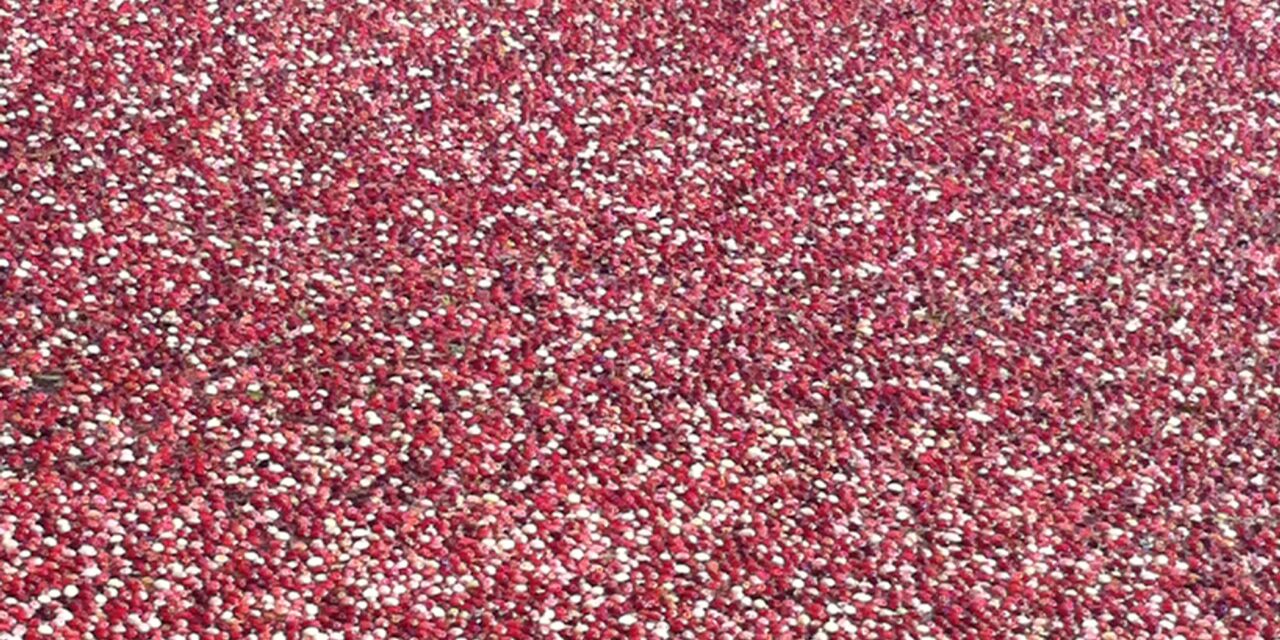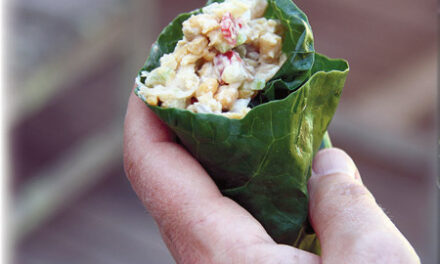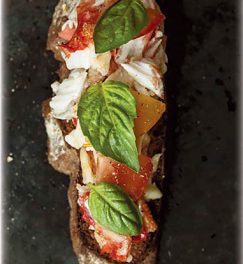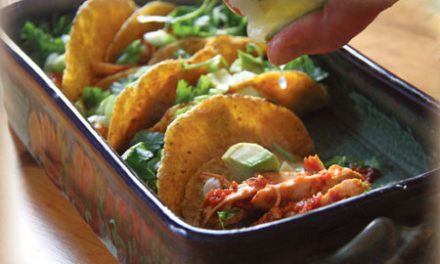By Karen J. Covey.

Cranberry Bog in Summer. Photo Credit visitma.com.
Cranberries, Massachusetts’ official state berry (and beverage), have a long-standing place in the Commonwealth’s history dating back to 1816 when Henry Hall, a Revolutionary War veteran, began cultivating cranberries in his own bogs when he started noticing how much better they grew when sand blew over them. This unique technique quickly caught on, and other local landowners followed suit, turning their properties into cranberry bogs and selling the fruit commercially.
Popularity and demand grew, and today cranberries are the number one agricultural crop in Massachusetts with over 13,000 acres in production, including a large concentration in both the South Coast and South Shore regions. These regions are dotted with bogs from big to small, including Ocean Spray, a farmer-owned cooperative; the A.D. Makepeace Company, one of the largest growers in the world; and Southers Marsh, one of several with a long family lineage in the business.

Bog Hollow Bog during an October harvest, Kingston MA.
With ever-changing climate and environmental concerns, cranberry growers must continue to be innovators, finding new and more sustainable ways to harvest. Growers often replace older bog systems by planting newer varieties that allow for a higher yield, as well as installing more efficient irrigation systems and pumps to help control water usage. Adding solar is also a huge benefit to growers, and Edgewood Bogs, a 4th-generation cranberry grower in Carver, led the way in the industry when they started installing solar panels in 2010. They’ve also built a state-of-the-art, sustainable facility where they process and package products for Cape Cod Select LLC, their retail brand of cranberries.
Cranberries are typically harvested between September and early November when they’re a deep red color. Unlike other fruit, the process of harvesting cranberries is quite unique and typically done in one of two ways, either wet or dry harvesting.
Wet harvesting is the more common method and is done by first flooding the bogs with water. A machine known as a water reel harvester drives around the bog to agitate the waters, dislodging the berries from their vines. Once dislodged, the little pocket of air inside the cranberries allows them to float. They then are corralled by cranberry farmers and loaded onto trucks. Wet-harvested cranberries are then processed into juice or sauce or sold for concentration.
Although similar in process, dry harvesting is done without water, using a picking machine with steel comb-like fingers that is steered around the bog to separate the cranberries from their vines. Once separated, the cranberries are cleaned and packaged and are then sent off to the markets to be sold as fresh fruit for your holiday table.
Regardless of how you eat them, cranberries are loaded with health benefits that make consuming them something to consider beyond the holidays. In addition to their known urinary tract health properties, the benefits of consuming cranberries extend throughout much of the body. Cranberries naturally contain the flavonoids known as proantho-cyanidins (PACs), a chemical compound that gives fruits and flowers red, blue, or purple colors. They are also one of the most powerful antioxidants in the plant world, helping to neutralize harmful free radicals in the body. PACs are known to be linked to protecting oral and heart health, decreasing inflammation, and supporting digestive health. And as more and more research is conducted, researchers seem confident that they’ll continue to discover even more health benefits. But with what we already know, it’s easy to see why cranberries should become part of any healthy eating plan.
For a list of local growers and bogs to tour, visit www.Cranberries.org or The Cranberry Institute’s website, www.CranberryInstitute.org.
Karen Covey is a chef, recipe developer, and author of The Coastal Table: Recipes Inspired by the Farmlands and Seaside of Southern New England. She is also the founder of The Coastal Table magazine. She is currently working on her 3rd cookbook, combining her love of cooking with her passion for art. karenjcovey.com.

Cranberry Maple Syrup
Ingredients
- 1½ cups fresh or frozen cranberries
- 1 cup maple syrup
Instructions
- In a saucepan, bring cranberries and maple syrup to a boil over medium-high heat. Reduce heat to low, and simmer for 5 to 10 minutes or until cranberries start to pop. Using a spatula, slightly crush cranberries until all are popped and mashed.
- Remove from heat and allow to cool to room temperature.
- Strain through a fine-mesh sieve, cover, and refrigerate until ready to use.
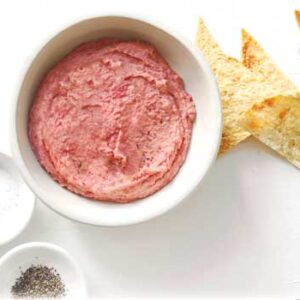

Cranberry Hummus
Ingredients
- ½ cup fresh or frozen cranberries
- Zest from 1 lemon
- Juice from 1 lemon divided
- 1 tablespoon sugar
- 1 15-ounce can chickpeas drained and rinsed
- 1 to 2 teaspoons honey or to taste
- Kosher salt to taste
- Freshly ground black pepper to taste
- ¼ cup extra virgin olive oil
Instructions
- In a medium saucepan, combine cranberries, lemon zest, juice from ½ lemon, and sugar, and place over medium heat.
- Simmer until cranberries begin to pop (use a spatula to slightly crush cranberries as needed) and sauce thickens, about 10 minutes.
- Remove from heat and allow to cool to room temperature.
- Transfer cooled cranberry mixture to a food processor along with chickpeas, juice from remaining ½ lemon, and 1 teaspoon honey. Season with salt and pepper and pulse until incorporated. With motor running, slowly stream in olive oil and process until smooth, scraping down sides of bowl as necessary. Taste for seasoning and adjust as desired.
- Cover and refrigerate until ready to serve.


Cranberry Country Cake
Ingredients
Crumble
- ⅓ cup flour
- ⅓ cup light brown sugar
- ½ teaspoon ground cinnamon
- ¼ teaspoon kosher salt
- 3 tablespoons unsalted butter melted
Cake
- Cooking spray for greasing
- 1¼ cups flour
- 1 teaspoon baking powder
- ½ teaspoon baking soda
- ½ teaspoon ground cinnamon
- ¼ teaspoon kosher salt
- 4 tablespoons unsalted butter at room temperature
- ¾ cup light brown sugar
- ¼ cup sugar
- 2 large eggs at room temperature
- Zest from 1 lemon
- 1 teaspoon vanilla extract
- 1 cup plain Greek yogurt
- 1¼ cups fresh or frozen cranberries
Instructions
- To make crumble, combine flour, light brown sugar, cinnamon, and salt in a bowl. Add butter and mix until combined but still crumbly. Transfer bowl to freezer while you prepare cake.
- Preheat oven 350 degrees. Line bottom of a 9-inch springform pan with parchment paper. Coat top of paper and all sides of pan with cooking spray. Place pan on a baking sheet, set aside.
- In a large bowl, combine flour, baking powder, baking soda, cinnamon, and salt.
- In a standing mixer fitted with paddle attachment, cream together butter and sugars for about 2 minutes.
- Add eggs, lemon zest, and vanilla and mix until incorporated. Slowly add one third of flour mixture, followed by half of yogurt. Add another third of flour mixture, followed by remaining yogurt. Add remaining third of flour mixture and mix until just combined. Remove bowl and fold in cranberries (batter will be thick).
- Pour batter evenly into prepared pan. Sprinkle top of cake evenly with crumble mixture, taking care to break up any larger pieces of crumble as you scatter it, as bigger clumps will prevent cake from cooking evenly (you’re looking for an even layer of smaller crumbles over entire cake).
- Bake for 60 to 75 minutes, or until a toothpick inserted into middle of cake comes out clean.
- Allow to cool to room temperature before slicing.

